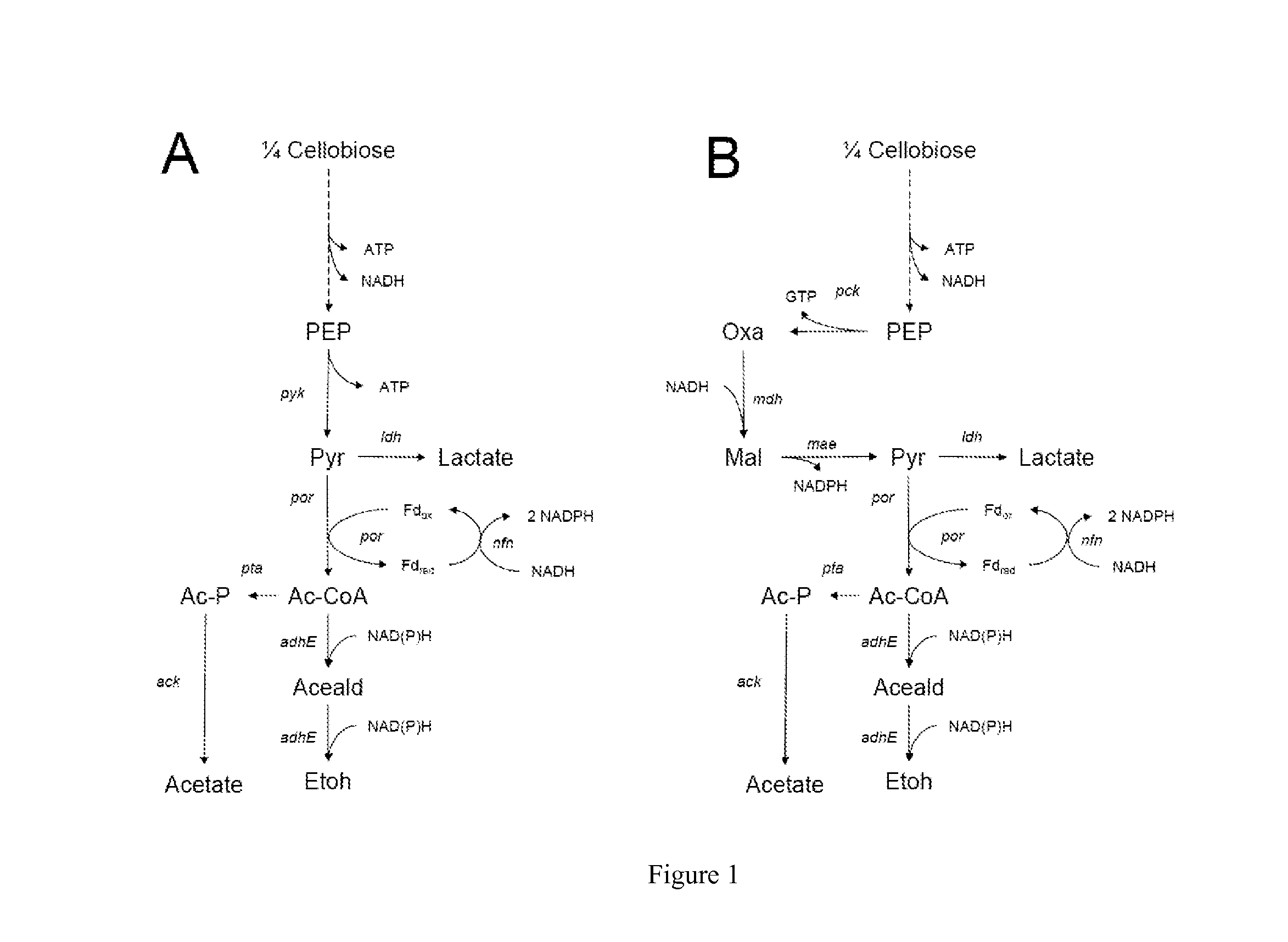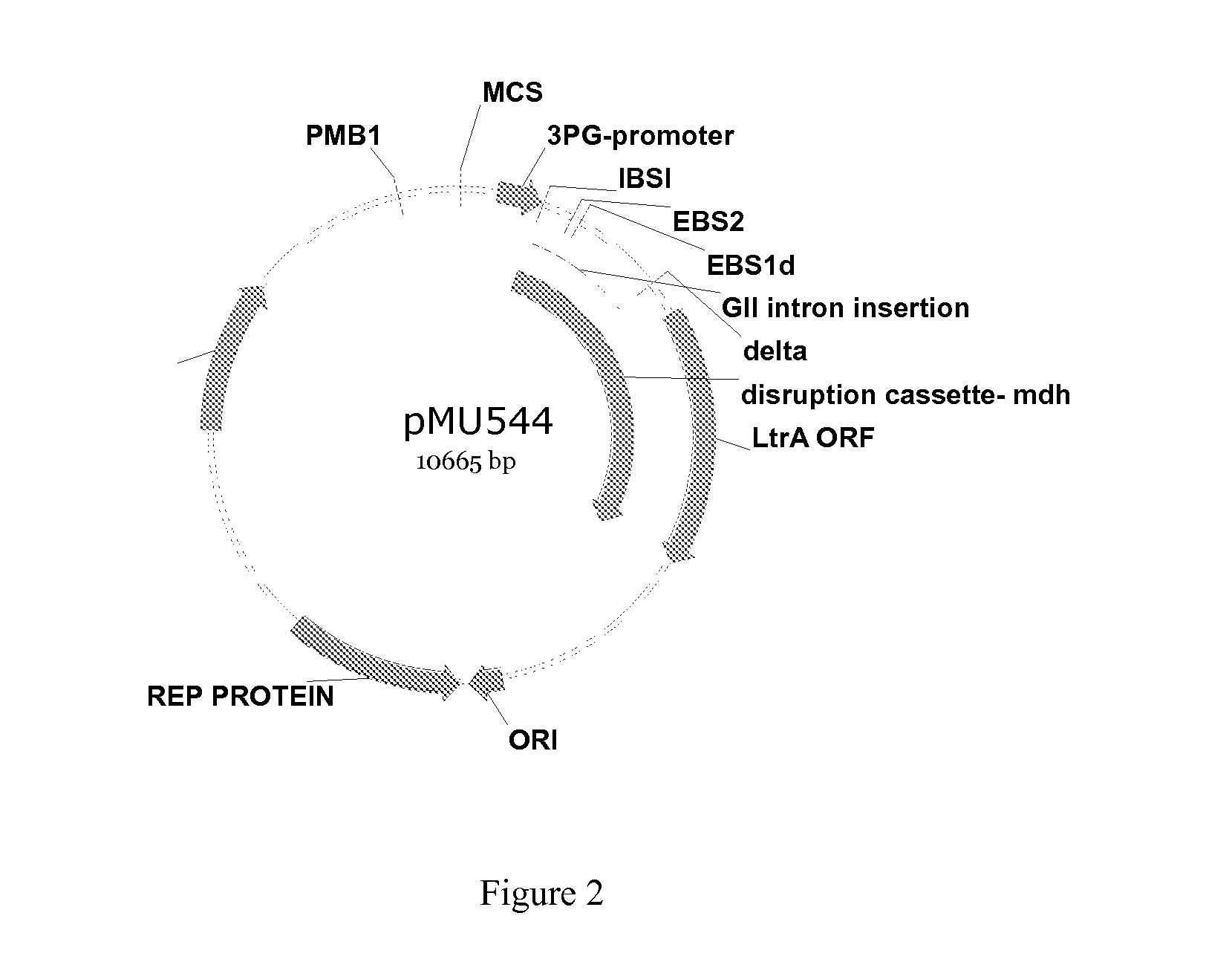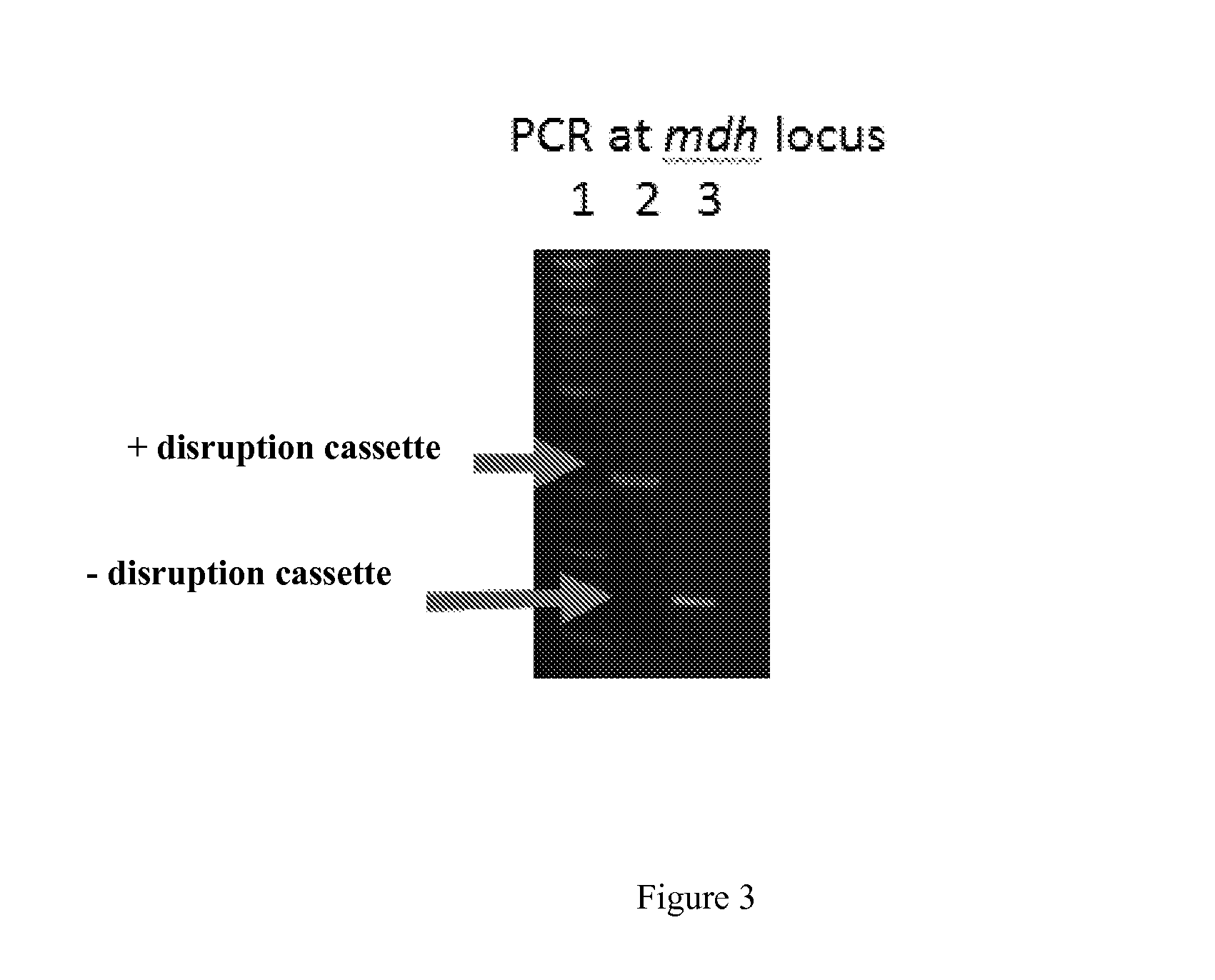Engineering Microorganisms to Increase Ethanol Production by Metabolic Redirection
a technology of metabolic redirection and microorganisms, applied in the direction of biofuels, enzymology, lyase, etc., can solve the problems of difficult realization of this potential utility, difficulty in overcoming the recalcitrance of hydrolysis, and general absence of low-cost technology for overcoming the recalcitrance of these materials, so as to increase the ethanol production, redirect the carbon flux, and increase the effect of profi
- Summary
- Abstract
- Description
- Claims
- Application Information
AI Technical Summary
Benefits of technology
Problems solved by technology
Method used
Image
Examples
example 1
Insertion of Pyruvate Kinase on a Replicating Plasmid
[0113]The gene for pyruvate kinase was introduced into C. thermocellum on a replicating plasmid. The gene for pyruvate kinase was amplified by PCR from T. saccharolyticum and cloned into plasmid pMU102 (described in Tripathi S A, Olson D G, Argyros D A, Miller B B, Barrett T F, Murphy D M, McCool J D, Warner A K, Rajgarhia V B, Lynd L R, Hogsett D A, Caiazza N C. Development of pyrF-based genetic system for targeted gene deletion in Clostridium thermocellum and creation of a pta mutant. Appl Environ Microbiol. 2010. 76(19):6591-9.), creating plasmid pMU2106. SEQ ID NO: 55. This plasmid was transformed into C. thermocellum WT strain DSM1313 [available from the public repository DSMZ] followed by selection for thiamphenicol resistance. The created strain was designated M1716.
example 2
Insertion of Pyruvate Kinase into the Genome
[0114]The gene for pyruvate kinase was introduced into the chromosome of C. thermocellum. The pyruvate kinase gene was amplified by PCR from T. saccharolyticum and cloned downstream from the native C. thermocellum enolase promoter to generate plasmid pDGO-05. SEQ ID NO: 56 and SEQ ID NO: 57. This plasmid was transformed into strain M1354 (hpt deletion strain) (Argyros, D A, Tripathi S A, Barrett T F, Rogers S R, Feinberg L F, Olson D G, Foden J M, Miller B B, Lynd L R, Hogsett D A, Caiazza N C, High ethanol titers from cellulose using metabolically engineered thermophilic, anaerobic microbes. Appl. Env. Microbiol. 2011. 77(23):8288-94; use of hpt deletion strains is also described in U.S. application Ser. No. 13 / 393,093, which is incorporated herein by reference.), and selected for thiamphenicol and FuDR resistance, resulting in insertion of the pyruvate kinase gene at the ldh locus of C. thermocellum. Those cells were then subjected to AZ...
example 3
Redirection of Carbon Flux by Reducing PEPCK Expression
[0115]The expression of PEPCK was reduced dramatically in strain DS8 by altering the start codon from ATG to GTG. The plasmid pYD01 was built for this purpose by yeast-mediated recombination using methods described previous and known in the art. SEQ ID NOs: 58-60. (Shanks R M, Caiazza N C, Hinsa S M, Toutain C M, O'Toole G A. Saccharomyces cerevisiae-based molecular tool kit for manipulation of genes from gram-negative bacteria. Appl Environ Microbiol. 2006 July; 72(7):5027-36). The plasmid pYD01 contains two fragments from the upstream region of the pckA gene. One of the fragments contains a modified start codon that has been changed to GTG. The cat and hpt genes are positioned between the two fragments. The resulting plasmid was transformed into C. thermocellum, and integrants were selected with thiamphenicol selection, then integrants were selected with thiamphenicol plus FuDR. Next, by selecting for resistance to AZH, clones...
PUM
| Property | Measurement | Unit |
|---|---|---|
| temperature | aaaaa | aaaaa |
| temperature | aaaaa | aaaaa |
| temperature | aaaaa | aaaaa |
Abstract
Description
Claims
Application Information
 Login to View More
Login to View More - R&D
- Intellectual Property
- Life Sciences
- Materials
- Tech Scout
- Unparalleled Data Quality
- Higher Quality Content
- 60% Fewer Hallucinations
Browse by: Latest US Patents, China's latest patents, Technical Efficacy Thesaurus, Application Domain, Technology Topic, Popular Technical Reports.
© 2025 PatSnap. All rights reserved.Legal|Privacy policy|Modern Slavery Act Transparency Statement|Sitemap|About US| Contact US: help@patsnap.com



